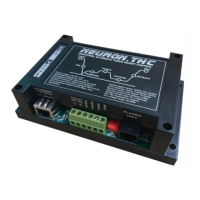USER MANUAL
nozzle is too high above the plate. Top dross is normally a very light accumulation that can be
removed easily with a scraping tool.
Solution:
1. Reduce cutting speed in 5 in. per minute increments, while monitoring for the introduction of
low speed dross.
2. Lower the arc voltage setting in 2 volt increments.
3. Check the nozzle for damage and replace as needed.
Additional improvements
Some of these improvements involve trade-offs, as described.
Piercing
The pierce delay should allow sufficient time to penetrate the full thickness of the material, but
not so long that it allows the arc to “wander” while trying to find the edge of a large pierce hole.
As consumables wear, this delay time may need to be increased. Pierce delay times given in the
cut charts are based on average delay times throughout the life of the consumables.
When piercing materials close to the maximum thickness for a specific process, there are several
important factors to consider:
• Allow a lead-in distance that is about the same as the thickness of the material being pierced.
50 mm (2 in) material requires a 50 mm lead-in.
• To avoid damage to the shield from the build up of molten material created by the pierce, do
not allow the torch to descend to cut height until it has cleared the puddle of molten material.
• Different material chemistries can have an adverse effect on the pierce capability of the
system. In particular, highstrength steel and steel with a high manganese or silicon content can
reduce the maximum pierce capability.
• Starting torch motion immediately after transfer and during the pierce process can extend the
piercing capability of the system in some cases. Because this can be a complex process that can
damage the torch or other components, a stationary or edge start is recommended.

